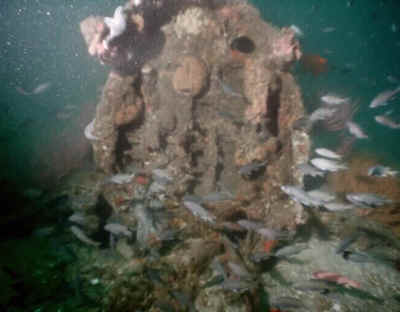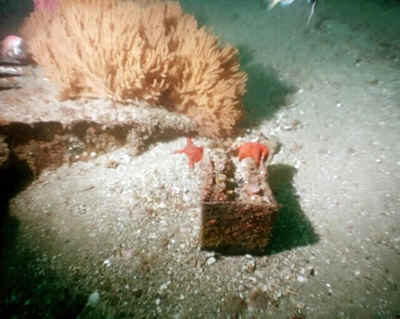F4U Corsair
| Serial Number: 82097 | Date of Sinking: July 5, 1949 | |||
| Type: F4U-4 Corsair | Cause of Sinking: Engine Failure | |||
| Wingspan: 40'11" | Length: 33'8" | Cargo: None-Pilot | ||
| Built: Unknown | Location: Crystal Cove, Laguna Beach | |||
| Construction: Aluminum | Depth: 70' | Visibility: 10-40' | ||
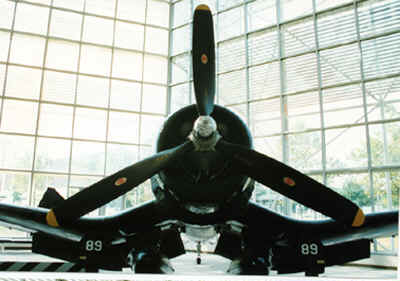 |
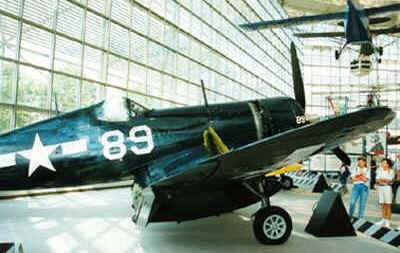 |
|||
|
Made famous by the TV series Baa Baa Black Sheep, the Corsair's hallmark--an inverted gull wing--is unmistakable. Navy reserve pilot William H Anderson was assigned to Los Alamitos Naval Air station, serving two weeks' training duty. On July 5, 1949, he took off on a routine training flight in the company of three other Corsairs headed for San Diego. On the return trip, he developed engine trouble about a mile offshore. Despite moving his mixture control to full rich, the engine would not perform well enough to return to the airport and he prepared for a water landing near a fishing boat about a 1/2 mile off Crystal Cove. After a sucessful water landing, the plane began to sink immediately. He inflated his Mae West, but had to deflate one side in order to release his harness and left his parachute in the plane. Fortunately, he escaped without injury and was picked up minutes later from a shore launch. His plane lay undisturbed until its discovery by a pair of divers from El Toro Marine base in late 1960 or early 1961. They reported that the plane contained guns, a parachute and possibly a body, prompting the Navy to investigate further. In January 1961, the minesweeper USS Loyalty was sent to investigate and a Navy diver confirmed that the plane was an F4-U Corsair. In 1962, Tommy Thompson of the Navy's diving unit salvaged the engine from the plane using a cable and salvage tug, hoping to identify the plane by the many data plates attached to the engine. According the December 1977 issue of Skin Diver magazine, the Corsair was rediscovered in March 1974. At the time, the plane was described as largely intact, with some damage to the tail section. Skin Diver again revisited again in February 1981, stating that the wreck had deteriorated greatly in the past years. Unfortunately, the plane lays in popular fishing grounds and is frequently hooked by anchors. The plane has been incorrectly identified as piloted by Lt. George Mortan who lost his Corsair on May 20, 1947. Mortan flew over the ocean with poor visibility, became disoriented, and ran out of gas. He successfully ditched his plane 110 yards north of the Balboa pier (off 6th street) without injury. A a side scan survey of the area failed to locate anything on the bottom near the pier and Mortan's plane is believed to have been salvaged.
|
||||
|
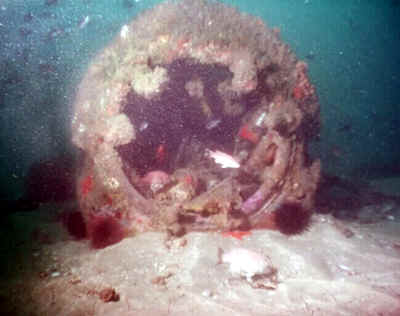 |
|
The fuselage is missing aft of the firewall--cockpit, fuselage and tail section are long gone. |
A head-on view, looking at where the engine was attached. |
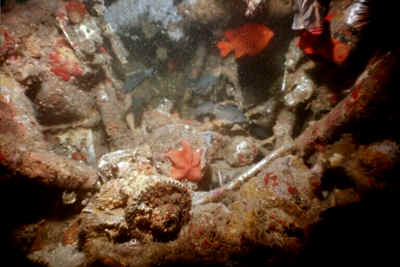 |
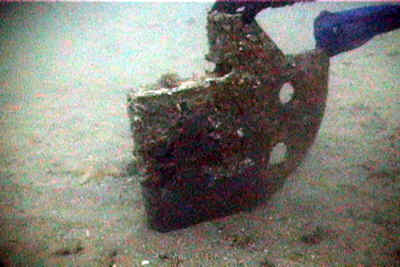 |
| A closer view of fuselage, looking inside and aft of the cowling. | The top of the rudder is all that remains of the tail section. |
|
|
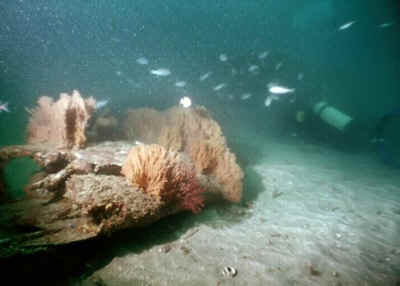 |
| Two batteries lay in the sand, but it is not known if they are from the plane or cast overboard by some fisherman. | The wings can still be recognized. |
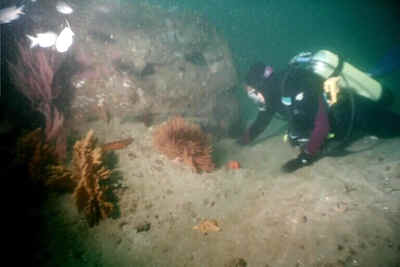 |
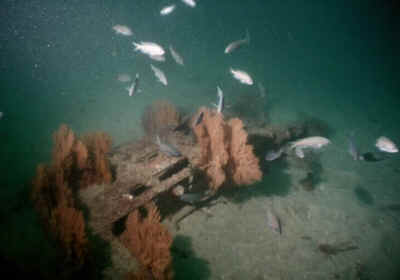 |
|
About eight feet is all that is left of the fuselage. |
Close-up of the wing section. |
| Like to learn more about this wreck? Visit our Guest Page to submit your inquiry. |
